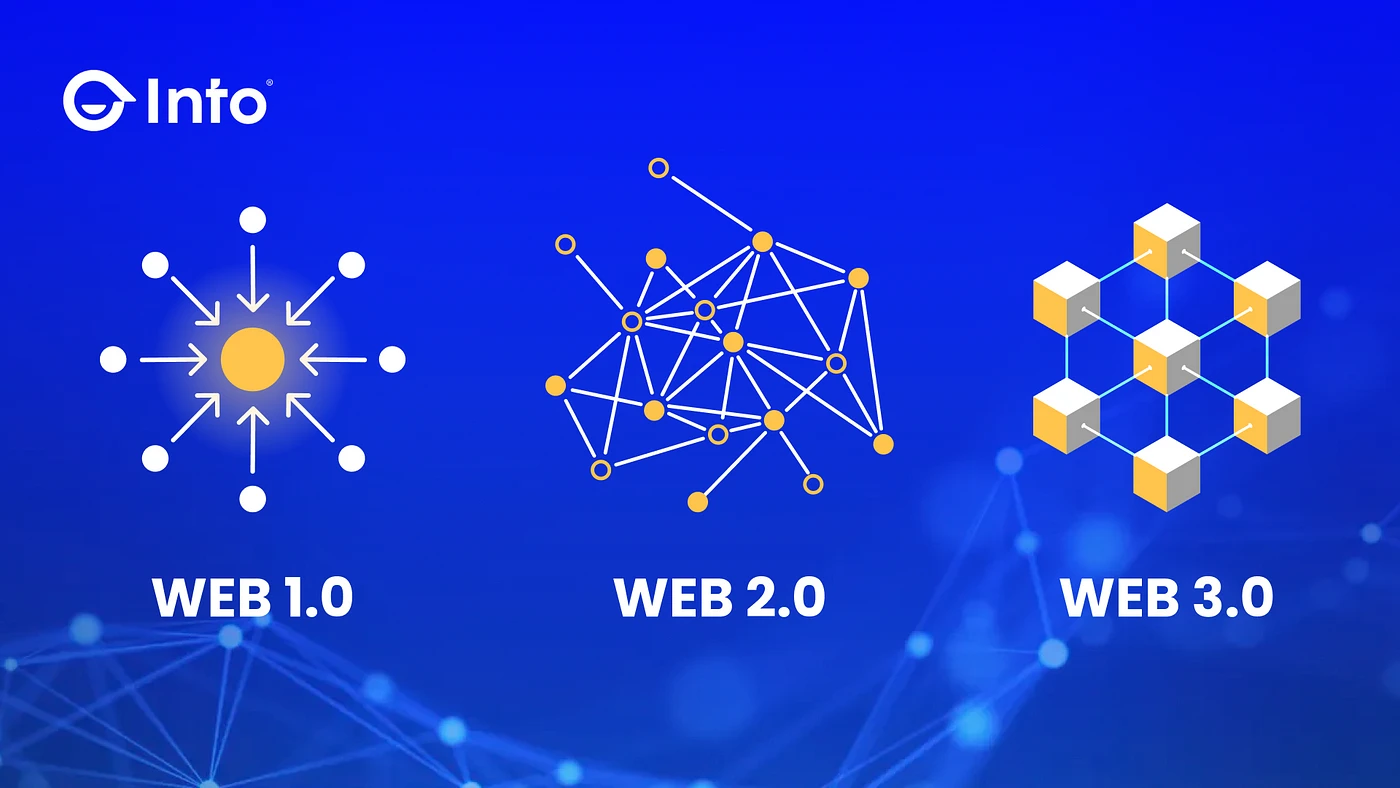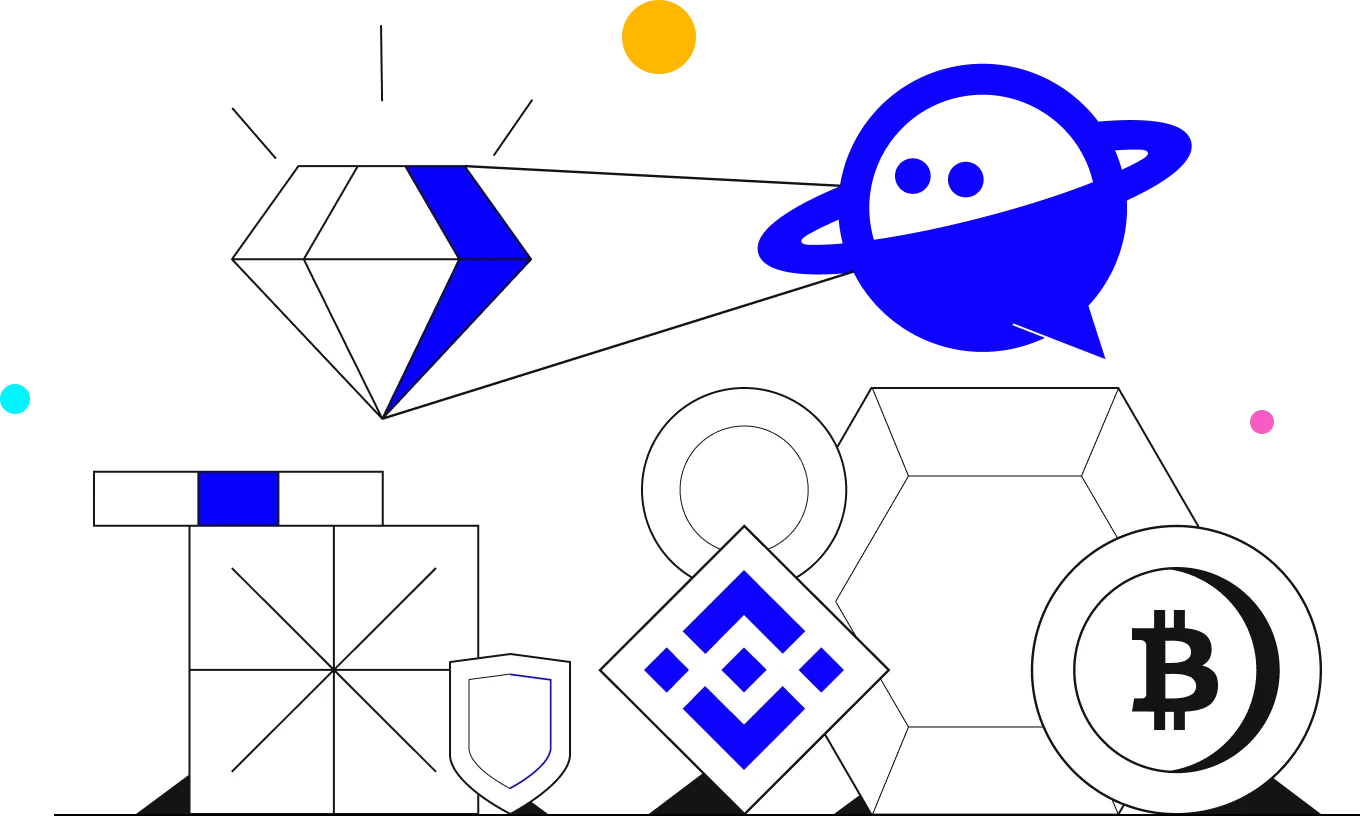In the Web3 universe, a powerful gravitational force is reshaping the entire digital world. This gravitational force comes from a super connector called INTO. As a pioneer in the Web3 social field, INTO is reshaping the value system of the entire industry chain in an unprecedented way. It is no longer satisfied with innovation in a single field, but boldly breaks down the barriers between social, financial, storage, computing and other fields to build a truly decentralized ecological Internet.

1. Benefit sharing is an inevitable trend in the development of Web3
In the development process of Web3, benefit sharing has changed from a beautiful vision to an inevitable trend. Behind this transformation, there are profound technical, economic and social logics.
First, from a technical perspective, the underlying technology of Web3 provides the possibility for achieving true benefit sharing. The decentralized nature of blockchain technology enables the creation, circulation and distribution of value without centralized authority. The emergence of smart contracts allows complex benefit distribution rules to be encoded and automatically executed, greatly reducing the execution cost of benefit sharing. The development of cryptocurrency and token economy provides convenient tools for the quantification and circulation of benefits. These technological innovations jointly build a technical foundation for achieving true benefit sharing.
Secondly, from an economic perspective, benefit sharing is an effective way to solve the problem of unfair value distribution in the current digital economy. In the Web2 era, large technology companies have gained disproportionate benefits by controlling user data and platform traffic, while users who truly create value have difficulty obtaining corresponding returns. This unbalanced situation is not only not conducive to the long-term development of the ecosystem, but has also triggered more and more doubts and resistance. The benefit sharing model of Web3, by allocating part of the ownership and decision-making power of the platform to users, allows users to truly participate in the process of value creation and distribution, thereby achieving a more fair and sustainable economic model.
Again, from the perspective of the ecosystem, benefit sharing is the key to promoting the prosperity and development of the entire Web3 ecosystem. In an ecosystem with shared benefits, each participant is motivated to contribute to the development of the ecosystem because they know that their efforts will be rewarded accordingly. This positive incentive mechanism can attract more participants to join, promote more innovation and value creation, and thus form a virtuous circle. In contrast, ecosystems with unfair distribution of benefits often find it difficult to continue to attract high-quality participants, which ultimately leads to the decline of the entire ecosystem.
Finally, from the perspective of long-term development, profit sharing is an inevitable choice for Web3 projects to achieve sustainable development. In the rapidly changing digital world, a single business model or technological innovation can hardly guarantee long-term competitive advantage. Only those projects that can continuously attract and retain high-quality participants and continuously create value can survive in the fierce competition. And profit sharing provides such a mechanism for sustainable development for the project.

II. INTO’s benefit-sharing model: connection, integration and symbiosis
INTOs profit-sharing model is like a powerful value gravity field that closely links all areas of Web3. This gravitational field is mainly composed of three core elements: connection, integration and symbiosis. They interact and reinforce each other, and together shape INTOs unique value ecosystem.
First, lets focus on the key element of connection. INTO acts as a super connector in the Web3 world, breaking down barriers between social, financial, storage, computing and other fields, and building a decentralized ecological Internet. In this ecosystem, every participant can freely interact across boundaries and create value. For example, a social content creator can easily monetize his work in the form of NFT, which can be used as collateral on the DeFi platform. A storage node provider can convert his contribution into social influence or financial benefits. This seamless connection not only improves the efficiency of value circulation, but also creates more value acquisition opportunities for each participant. INTOs connectivity is like laying a dense value highway network in the Web3 galaxy, allowing value to flow freely and efficiently between different fields.
Secondly, lets look at the innovation engine of integration. INTO is not just a simple connection between different fields, but more importantly, it promotes the deep integration and innovation of these fields. On the INTO platform, innovations in different fields are no longer isolated, but mutually reinforcing and empowering. Social data may become the basis of financial credit, storage contributions may be converted into social influence, and computing power may be converted into financial benefits. This cross-domain fusion innovation not only creates new application scenarios, but also releases huge synergy effects. For example, INTO may launch a decentralized lending service based on social credit, or a social ranking system based on storage contributions. This ability to integrate innovation makes INTO an innovation melting pot in the Web3 world, constantly giving birth to new forms of value.
Finally, lets focus on the ecological cornerstone of symbiosis. INTO is building a symbiotic and win-win Web3 ecosystem. In INTOs blueprint, Web3 is not a zero-sum game, but a mutually beneficial and symbiotic community of destiny. Through a carefully designed token economic model and governance mechanism, INTO ensures that every participant in the ecosystem can share the growth dividend fairly. Whether it is an ordinary user, content creator, developer or investor, they can find their place in this ecosystem and get corresponding returns. For example, users may obtain governance rights and dividend rights by holding platform tokens, developers may get token rewards by contributing codes, and investors may get transaction fees by providing liquidity. This symbiotic and win-win mechanism gives INTOs ecosystem a strong self-enhancement ability, which can continuously attract more participants to join and form a virtuous circle.
Through the organic combination of these three core elements, INTO has built a powerful value gravity field. In this field, the various fields of Web3 are no longer isolated individuals, but closely connected and interacting organic wholes. Value can flow freely, innovate continuously, and grow together. This profit-sharing model not only optimizes the creation and distribution of value, but also promotes the integrated development of the entire Web3 industry.

3. INTO builds a value gravity field of technology, mechanism and culture
In order to successfully build this powerful value gravity field, INTO needs to work on technology, mechanism and culture at the same time. The synergy of these three dimensions constitutes the complete implementation path of INTOs interest-sharing model.
On the technical level, INTO has created an open and scalable technical architecture. First, INTO uses cross-chain technology to achieve interoperability between different blockchain networks. This allows INTO to seamlessly connect different blockchain ecosystems and provide users with a broader space for value circulation. Secondly, INTO has developed a modular smart contract system that can flexibly combine different functional modules to quickly implement new business logic. This modular design has greatly improved INTOs innovation efficiency. Finally, INTO has also introduced privacy computing technologies such as zero-knowledge proof, which realizes trusted computing and sharing of data while protecting user privacy. This provides technical support for INTOs cross-domain integration and innovation. For example, users can prove their social influence or credit status without disclosing specific data, so as to obtain corresponding financial services.
At the mechanism level, INTO has designed a sophisticated token economic model and governance mechanism. First, INTO issued native tokens as the value carrier and governance tool of the entire ecosystem. Zeichens can not only be used to pay platform service fees, but also to participate in community governance and obtain platform revenue sharing. Secondly, INTO introduced inflation design, and the newly issued tokens are mainly used to reward ecological contributors, such as content creators, node operators, etc. This mechanism ensures the continuous growth and reasonable distribution of ecological value. Finally, INTO also established a decentralized autonomous organization (DAO) to allow token holders to participate in major decisions of the platform. This democratic governance mechanism has greatly enhanced the cohesion and participation of the community. For example, the community can decide the development priority of new features or adjust the token allocation ratio through voting.
At the cultural level, INTO has cultivated an open, collaborative, and shared ecological culture. First, INTO actively promotes the concept of Web3 and helps users understand the value of decentralization and token economy through various educational activities and content. Secondly, INTO encourages mutual assistance and collaboration among community members and has established various incentive mechanisms to reward members who contribute to the community. Finally, INTO also actively organizes various rich activities to attract developers to innovate on the platform. Through these initiatives, INTO is cultivating an ecological culture full of creativity and collaborative spirit. For example, in the INTO community, users from all over the world can often be seen spontaneously organizing learning groups to share Web3 knowledge, or developers collaborating with each other.
Through the three-pronged approach of technology, mechanism and culture, INTO is turning the concept of value gravity field into reality. In this process, INTO is not only building a platform, but also cultivating a vibrant Web3 ecosystem. It is proving with practical actions that interest sharing is not a simple distribution of interests, but a systematic project that requires all-round consideration.
In short, INTOs value gravity field model shows us a new possibility for Web3. In this world, different fields are closely connected, innovation is continuous, and every participant can share the growth dividend fairly. The significance of this model goes far beyond INTO itself. It provides a new idea for solving the problems of island effect and insufficient value capture between Web3 projects, and points out a feasible path for building a more open, collaborative, and shared Web3 ecosystem.
This article is sourced from the internet: INTO: The “value gravity field” of the Web3 world
Originalartikel von Jasper De Maere, Outlier Ventures Originalübersetzung: J1N , Techub News Seit März 2024 hat der Kryptowährungsmarkt eine scharfe Korrektur erlebt. Die meisten Altcoins (Token außer Bitcoin, Ethereum usw.), insbesondere einige relativ gängige Altcoins, haben einen Preisrückgang von mehr als 50% von ihren Höchstständen erlebt, was jedoch keine großen Auswirkungen auf neu gelistete Token hatte. Durch die Untersuchung von mehr als 2.000 Fällen von Token-Ausgaben haben wir festgestellt, dass die Preise nativer Token von Projekten im Frühstadium mit Finanzierungsskalen von mehreren Millionen Dollar stabil bleiben und sich unabhängig vom Markt bewegen können. Zusammenfassung Im Private-Equity-Markt von Web3 beträgt die Investitionsskala von Pre-Seed- und Seed-Runden etwa eine Million US-Dollar. Gleichzeitig werden Projekte mit einem längeren Finanzierungsprozess…







